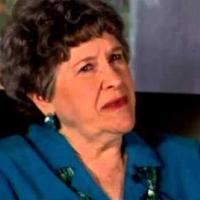When author Phyllis Reynolds Naylor starts a story, even she doesn’t know where it might lead. With Shiloh, Naylor discovered that she was really writing a story about the gray area between right and wrong.
This video appears in:
Transcript
In my own writing, without even thinking about it, that’s what forms each book. I think there’s some nugget, something that’s happened to me, or that I feel very strongly about and I don’t set out to teach a lesson or preach anything. It’s just that … when I wrote “Shiloh,” for example, I had no idea that it was about the gray areas between right and wrong. When there is no set rule of what you do. You have to work this out for yourself. He does … tries blackmail. He got … Marty has to try a lot of different things and finally he just simply wins the respect of this man. But I didn’t know that when I started out. I just started out thinking, “okay. I found this abused dog and what if he ran away and came to me? What would I do to get him back from his legal owner if I knew he really belonged to and was being abused?” And then, of course, the next question was, “if I were 11 years old what would I do?” And there’s a big difference between what you would do as an adult and what you would do as 11 year old child and so that I just simply sat down to write and see how an eleven-year-old boy could get a dog away from its legal owner if he had no money? That was an important thing but I didn’t know that I would be talking about right and wrong and gray areas and morals it … but they were very intrinsic in the book and that’s the way it has to be. It has to be the meat of the story and often we don’t know what it is we really want to say till we get into the writing of a book.
